Best customer loyalty scheme examples (and what makes them awesome)
More than 90% of companies choose to roll out customer loyalty schemes and we've shortlisted some of the best examples of customer loyalty programmes in action below.
Loyalty programmes like these have proven themselves as invaluable tools, not only for boosting revenue but also for fostering positive brand affinity.
So it's no surprise that a whopping 84% of consumers say they're more likely to stick with a brand that offers a customer loyalty scheme.
In fact, 66% reveal that the chance to earn rewards actually influences how they spend their money.
It’s no secret that it’s far more cost-effective to sell to existing customers than to constantly chase after new ones. That's why brands have jumped on the loyalty programme bandwagon. However, there are a number of different scheme types which fit into different categories, depending on the business profile and of course, the target audience.
Skip to a section:
Discover our customer loyalty platform in just 3-mins
Watch a quick demo video right now.

The best loyalty scheme examples from leading brands we all love
Below, we’re going to explore the best loyalty schemes offered by industry-leading brands.
These examples are a great source of inspiration and insight into how some of the best UK and global businesses effectively engage and retain their customer base through innovative strategies.
Retail loyalty programmes
IKEA
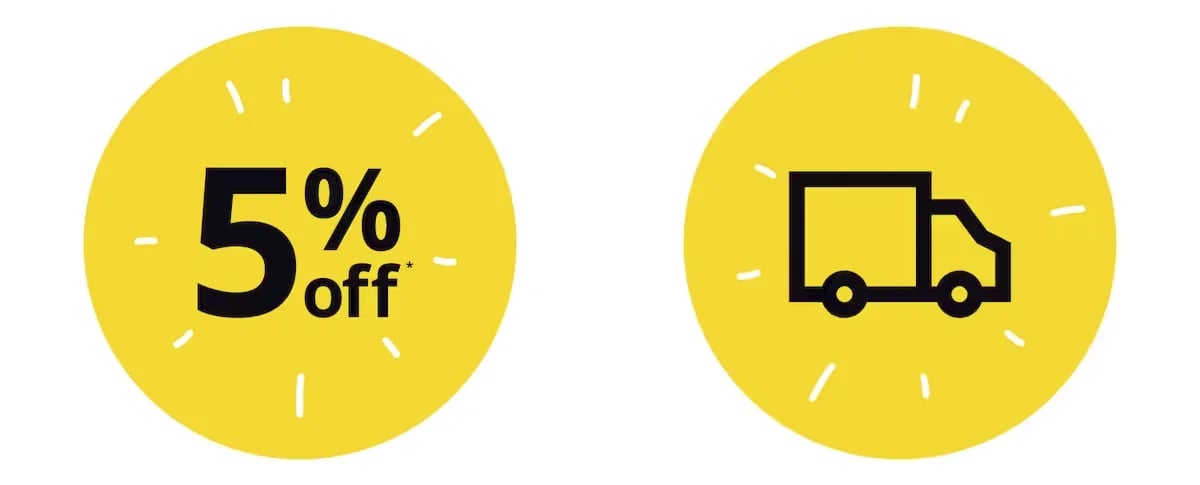
IKEA Family is IKEA’s very own loyalty club, boasting over 110 million members globally.
The great news is that IKEA Family is open to everyone, and it comes at no cost – with zero membership fees to worry about.
As an IKEA Family member, customers unlock a variety of perks, including discounts on select home furnishing products, food items, and services. Plus, on weekdays, customers can savour complimentary tea or coffee while they shop.
But there's more. IKEA hosts exclusive member-only events within its stores, featuring free home furnishing workshops and early previews of upcoming product ranges. To keep customers inspired and informed, they’ll also receive regular newsletters with the latest news and updates.
Customers also benefit from the all-important ‘Oops-assurance’. This means that in case something doesn't quite go as planned during your journey from the store to home or while assembling your purchases, IKEA has you covered.
The North Face
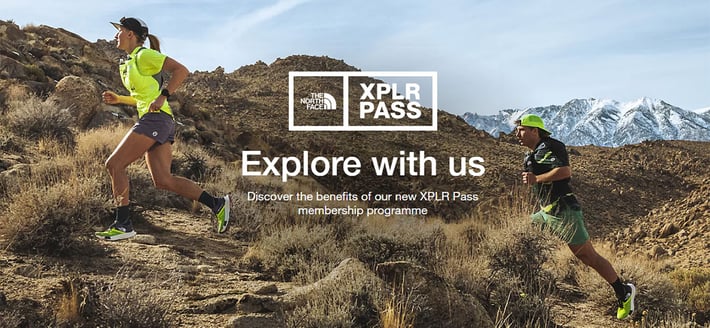
The North Face, known for its outdoor gear and clothing, has a unique way of keeping customers loyal with its XPLR Pass programme. This isn't your typical rewards programme – it's all about giving you choices to fit around your lifestyle.
Here's how it works:
When you shop, you earn points, just like any other rewards programme. But what makes it special are the extra ways you can earn points. You can get points for going to special events hosted by The North Face, checking in at specific places, or even just downloading their app.
When it's time to use those points, The North Face offers you more than just discounts. They offer experiences. Imagine using your points to go on a mountain climbing adventure in Nepal – it’s not all about buying things, but making lifelong memories.
Now, not every business can send people on fancy trips like hiking in Alaska. But the idea is the same: make a loyalty programme that fits your customers and makes them feel closer to your brand. Give them rewards that match their lives and dreams.
Waterstones Plus
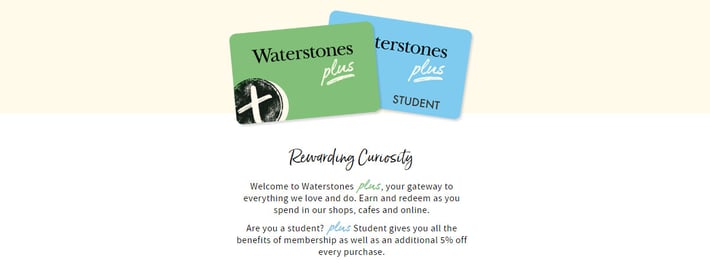
Waterstones, a prominent bookseller celebrated for its vast selection of literary treasures, introduced "Waterstones Plus" as an exclusive offering for book enthusiasts.
This loyalty scheme is a literary haven for avid readers, offering a delightful way to enhance their book-buying experience. Here’s what you can expect:
- Earning and redeeming points: As part of the Waterstones Plus programme, members have the opportunity to earn points with every purchase. These points can then be thoughtfully redeemed, allowing readers to indulge in more of their favourite books without stretching their budget.
- Access to special events: Waterstones understands that reading isn't just a solitary endeavor—it's a communal passion. That's why Waterstones Plus members receive exclusive invitations to special events. These gatherings might include book launches, author signings, or literary discussions, providing a unique opportunity to engage with the literary community.
- Exclusive discounts: In addition to earning points, members are treated to exclusive discounts that cater to their love of reading. These discounts may apply to new releases, bestsellers, or even niche genres, making it easier for book lovers to explore their literary interests.
Card-based loyalty programmes
Boots
.jpg?width=710&height=399&name=_111140239_mediaitem111140235%20(1).jpg)
The Boots Advantage Card is one of the most well-known and widely used loyalty programmes in the UK.
Let's take a closer look at the Boots Advantage Card and its key features:
- Earn points: Customers who sign up for the Boots Advantage Card earn points on their purchases. Typically, they earn four points for every £1 spent, making it easy for members to accumulate points quickly. The accumulated points can be redeemed for discounts on future purchases. Customers can use their points to get money off their shopping, effectively making their next purchase more affordable.
- Personalised offers: Boots uses customer data to personalise offers and promotions. Advantage Card holders often receive special offers tailored to their shopping habits, helping them save money on products they frequently buy.
- Birthday treat: Advantage Card holders typically receive a special birthday treat from Boots, which can range from bonus points to discounts on specific products.
- Health and Beauty Magazine: Members often receive a subscription to Boots' Health and Beauty magazine, providing them with valuable tips, advice, and information on health and beauty products.
John Lewis
The John Lewis Partnership Card is a unique and customer-centric credit card that goes beyond the conventional credit card offerings.
Tailored to enhance the shopping experience at John Lewis and Waitrose stores, it provides cardholders with an array of benefits that add value to their everyday purchases, including:
- Reward points: Cardholders earn points on their card for every eligible purchase they make, both within and outside of John Lewis and Waitrose. These points can be redeemed while shopping at either store.
- Flexible redemption. Rather than limiting rewards to specific products or categories, cardholders can use their points to shop for a wide range of items, from home furnishings to gourmet groceries. This flexibility empowers customers to choose how they want to enjoy the rewards they've earned.
- Exclusive offers: Cardholders also gain access to exclusive offers and promotions. These offers may include discounts, special deals, or limited-time sales events that cater specifically to cardholders.
- Early access to sales: Timing can be everything when it comes to snagging the best deals. Cardholders benefit from early access to sales at John Lewis and Waitrose, ensuring they have the first pick of discounted items. This early access can be especially advantageous during peak shopping seasons and major sale events.
Nandos
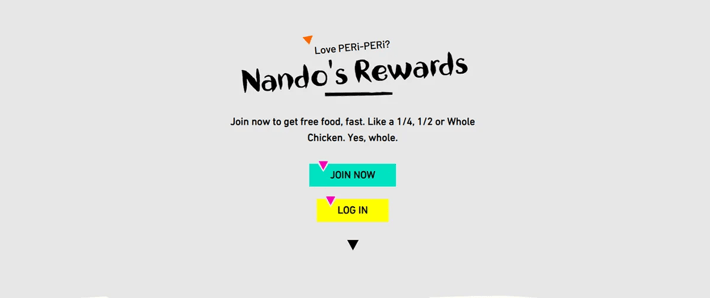
Nando's, may be best known for its delicious peri-peri chicken, but it also offers a card-based loyalty programme called ‘Nando's Rewards’.
Nando's Rewards members earn points with every purchase they make at Nando's restaurants. Points are typically earned based on the total spend, encouraging customers to visit Nando's repeatedly and gain more and more points.
Points can be used to claim a variety of tempting treats, from their legendary chicken dishes to sides, desserts, and even drinks – and Nando's even knows how to celebrate birthdays in style. Rewards members receive a special birthday treat, which often includes a complimentary meal or dessert, making your special day even more memorable.
What’s more, you’ll also have access to exclusive offers and promotions. These offers can include one-off discounts, limited-time menu items, or special combo deals that are only available exclusively to program members.
It’s super easy to manage points by downloading an app, where participants can view available rewards, and stay updated on the latest Nando's news and promotions.
Online loyalty schemes
Amazon Prime
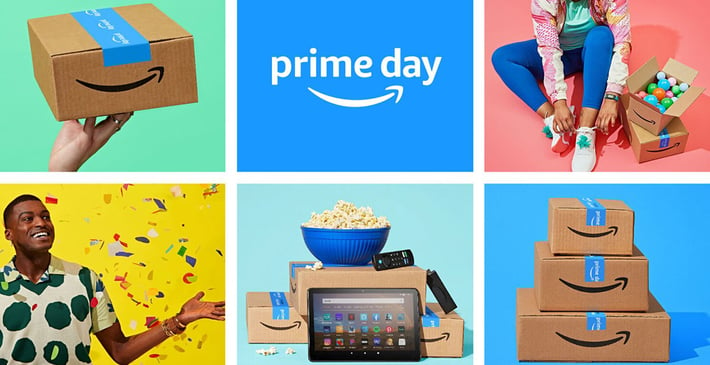
Amazon Prime is a subscription-based loyalty scheme offered by Amazon.
While it may not seem obvious as a loyalty programme, due to having to pay a monthly fee, there are a number of benefits that customers are treated to which cannot be overlooked. These include:
- Fast and free shipping: Amazon Prime members enjoy free and expedited shipping on millions of eligible items sold on Amazon. This includes free two-day shipping, same-day or one-day delivery in select areas, and even ultra-fast delivery options like Amazon Prime Now.
- Amazon Prime Video: Members gain access to Amazon Prime Video, a streaming service that offers a vast library of movies, TV shows, and original content produced by Amazon.
- Amazon Music: Subscribers have access to Amazon Music, Amazon's music streaming service, which provides ad-free listening to a vast library of songs and playlists.
- Amazon Prime Reading: Members can borrow e-books, magazines, comics, and more from the Amazon Prime Reading catalogue and read them on their Kindle devices or the Kindle app.
- Amazon First Reads: Prime members have early access to new books from popular authors, allowing them to download one free e-book each month from a selection of titles.
- Amazon Family: Prime members with families can access exclusive family-oriented offers, such as diaper discounts and family-friendly content.
- Amazon Photos: Subscribers get unlimited photo storage with Amazon Photos, as well as 5 GB of additional storage for videos and documents.
- Prime early access: Members often receive early access to new product launches and releases, allowing them to be among the first to try out new items.
Gymshark Family

E-commerce membership programmes diverge from traditional loyalty rewards by not relying on spending-based incentives.
Online workout fashion retailer, Gymshark is just one example of this. The brand provides modest perks in exchange for valuable data, such as email addresses, while promoting its products in the process.
Here are some of the loyalty perks customers can expect in this programme:
- Exclusive content: Gymshark offers exclusive workout routines, nutrition plans, and fitness tips to Gymshark Family members through its app or newsletter.
- Early access: Members can gain early access to new product releases or limited-edition collections.
- Personalised recommendations: By collecting data on members' fitness preferences and goals, Gymshark can provide personalised product recommendations and fitness resources, enhancing the overall member experience.
- Community engagement: Gymshark can facilitate member-to-member interactions through its app or online community. This can include forums, challenges, and discussions where members can connect, share their progress, and motivate each other.
Nike
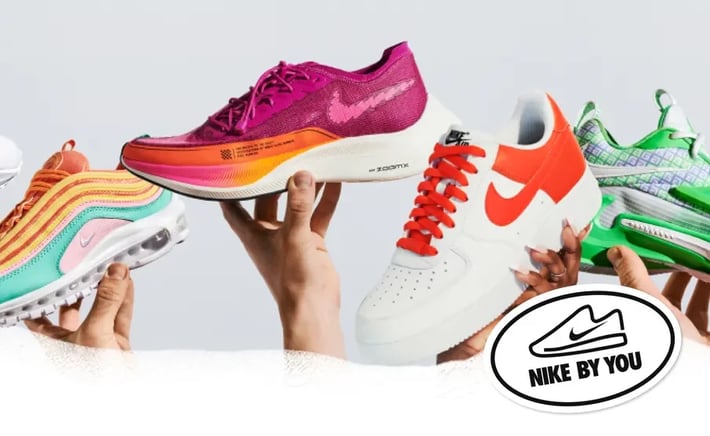
NikePlus, Nike's innovative online loyalty programme, stands out from the traditional rewards and discounts approach.
It offers a comprehensive ecosystem designed to enhance the overall experience for its members, that is completely unique to any other fitness or fashion brand in the global market.
Its innovative customer perks include:
- Early Access to product releases: One of the standout features of NikePlus is the privilege of early access to new product releases. Members get a sneak peek and the opportunity to purchase the latest Nike footwear, apparel, and accessories before they become widely available.
- Rewards for physical activity: Beyond being a ‘standard’ loyalty scheme, NikePlus is also geared towards promoting an active lifestyle. Members can earn rewards by engaging in physical activities, whether it's tracking a run, participating in fitness challenges, or completing workout sessions. These rewards can be in the form of exclusive badges, virtual trophies, or even discounts on future purchases.
- Events and challenges: NikePlus frequently hosts events and challenges that encourage members to push their limits, whether it's a virtual race, a community challenge, or a local Nike-sponsored event.
- Nike Training Club (NTC) Access: Members can access the Nike Training Club app, which offers a vast library of workouts and training plans led by world-class trainers. This provides additional value and helps members achieve their fitness goals.
How to improve customer retention
*Free Download*
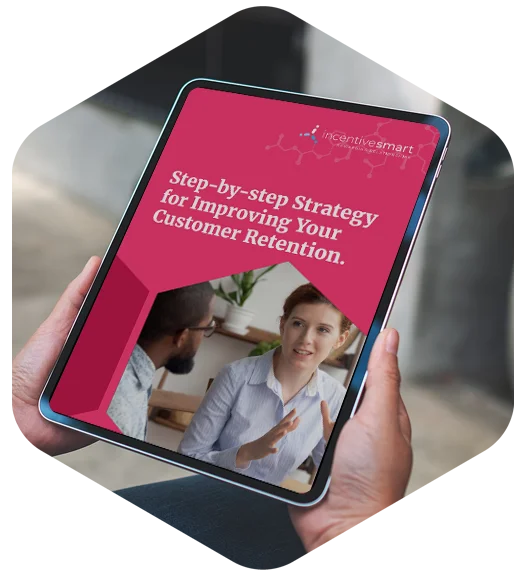
Tiered loyalty programmes
Starbucks
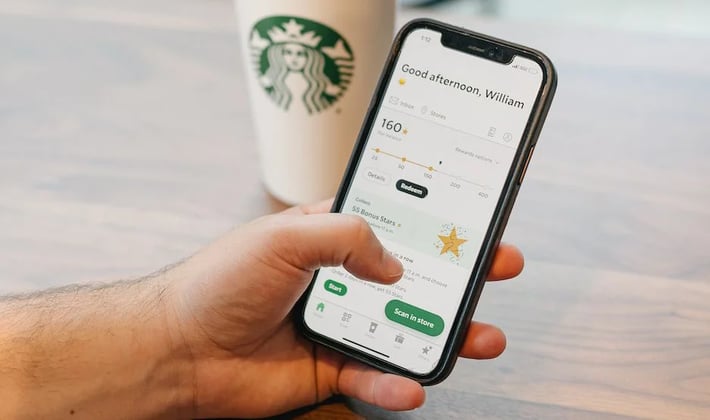
Starbucks, a global coffeehouse chain, has implemented a tiered loyalty system called "Starbucks Rewards" – and it’s free to sign up.
This system is designed to cater to a diverse range of customers, from occasional coffee drinkers to die-hard Starbucks enthusiasts. Here's an overview of what the program consists of:
Green Level (Welcome Level):
This is where all members start. Members at this level earn 2 "Stars" (loyalty points) for every dollar spent.
- They receive a free birthday reward, which can be used to redeem a complimentary drink or food item.
- Access to order ahead and pay using the Starbucks mobile app, which enhances convenience.
Gold Level:
To reach the Gold Level, a member needs to earn 300 Stars within a year. This encourages more frequent visits and spending. At this level, members continue to earn 2 Stars for every dollar spent.
- They receive a personalised Gold Card, symbolising their status.
- After reaching Gold status, members can redeem 125 Stars for a free drink or food item.
- Exclusive access to double-star days, which enable members to earn rewards faster.
Platinum Level (Starbucks Reserve® Card):
Starbucks Rewards' Platinum Level is designed for the most dedicated coffee aficionados.
- To reach Platinum status, a member needs to earn 600 Stars within a year.
- Platinum members earn 2 Stars for every dollar spent.
- They can redeem 150 Stars for a free drink or food item.
- Exclusive access to monthly double-star days and access to premium Starbucks Reserve® coffee.
In-App Challenges and Bonus Stars:
Starbucks also runs in-app challenges and promotions where members can earn bonus Stars for specific actions, such as trying new menu items or making multiple visits within a certain timeframe.
Sephora

Sephora, the renowned beauty retailer, has implemented a highly successful tiered loyalty system called "Sephora Beauty Insider". This multi-tiered programme caters to beauty enthusiasts and shoppers who seek personalised experiences and exclusive perks for their loyalty.
In addition to their spending benefits, the brand offers customers the opportunity to indulge in exclusive privileges, including access to special events, meet-and-greet opportunities, early product access, and gift cards, collectively referred to as "Experiences."
Here's a brief overview of what customers can expect:
Beauty Insider (Entry Level):
This is the starting point for all Sephora customers. Members earn 1 point for every dollar spent on purchases.
- A birthday gift is provided during the member's birthday month.
- Access to free beauty classes and in-store beauty services.
- Members can redeem points for rewards from the Beauty Insider Rewards Bazaar.
Very Important Beauty Insider (VIB):
To reach VIB status, members need to spend a specific amount within a calendar year, typically around $350.
- VIB members earn 1.25 points for every dollar spent.
- All Beauty Insider benefits are included.
- Exclusive access to VIB-only product launches, collections, and events.
- Sephora offers seasonal savings events with higher discounts for VIB members.
Rouge (Top Tier):
To achieve Rouge status, members must spend a substantial amount within a calendar year, typically around $1,000.
- Rouge members earn 1.5 points for every dollar spent.
- All Beauty Insider and VIB benefits are included.
- Access to even more exclusive products and experiences.
- Free standard shipping with no minimum purchase required.
- Unlimited access to the Sephora Beauty Studio for makeovers and personalised sessions.
How specific industries harness loyalty programmes
Streaming services
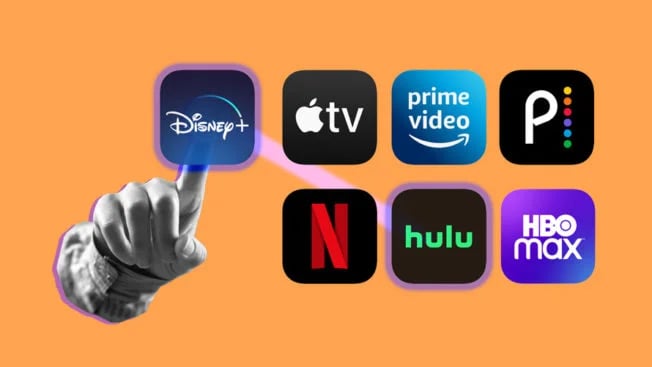
Subscribers earn points or badges for streaming content regularly. These rewards could unlock access to exclusive content, ad-free streaming, or early releases.
Did you know that by using a rewards credit card, you’ll receive a cashback benefit of up to 6% on a vast number of eligible streaming services, such as Netflix and Disney+, Hulu and Amazon Music Unlimited?
Travel agencies
Online travel booking platforms have revolutionised the way people plan and book their holidays, but the excitement goes far beyond simply booking a holiday.
One of the key hallmarks of travel rewards is the accumulation of points or airmiles with each booking made. Whether it's reserving flights, hotels, rental cars, or even holiday packages. Then, the earned points or miles serve as a currency that travellers can redeem for future travel bookings, or even upgrades (such as travelling in business class) or access to exclusive airport lounges.
Some programmes even offer early booking privileges, allowing members to reserve their holidays before they become available to the general public. This can be especially advantageous during peak travel seasons or for securing highly sought-after accommodations.
Food delivery services
The rise of online food delivery services has transformed the way people enjoy their favourite meals from restaurants, bringing the convenience of restaurant-quality food to their doorsteps. But with takeaway restaurants competing for custom, many food delivery apps have introduced loyalty programmes to entice hungry customers to keep coming back for more.
When users order frequently, they may receive percentage-based discounts, as well as free delivery, so they don’t have to worry about those annoying hidden charges. They may also gain access to special promotions such as limited-time offers, combo meal discounts, or early access to new menu items or restaurant partnerships.
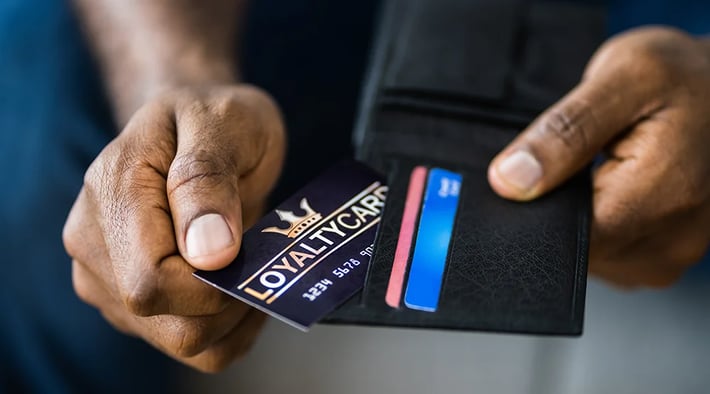
Ideas for small business loyalty programmes
Not got the same budget of the big players shown above?
No problem. small businesses can hop on the loyalty bandwagon quickly and affordably too.
Loyalty schemes for smaller companies just finding their feet or local businesses are typically characterised by their simplicity. They often involve straightforward mechanisms and need to be cost-effective.
Their purpose is not only to provide exclusive savings and discounts to loyal customers but also to create a sense of community encouraging business in local towns and cities, as well as online.
Here are some ways small businesses can encourage customer loyalty:
- Punch cards: Create a simple punch card system where customers receive a stamp or punch for each purchase. After a certain number of stamps, they earn a discount or a free product. This straightforward approach encourages repeat visits.
- Referral rewards: Encourage customers to refer friends and family to your business by offering rewards for successful referrals.
- Birthday treats: Send personalised birthday discounts or gifts to participants. It's a genuine way to show appreciation (while encouraging them to visit your business during their special day).
- Cross-promotions: Partner with other local businesses to cross-promote each other's loyalty programmes. For example, a coffee shop and a nearby bookstore could offer joint rewards for customers who visit both establishments on a regular basis.
- Feedback Incentives: Encourage customers to provide feedback through surveys or online reviews by offering small incentives, like a discount on their next purchase.
- Special events: Host members-only events, such as private sales, workshops, or tastings, to make loyal customers feel valued and appreciated.
Now for some real-life examples…
A local coffee shop
A small, independently owned coffee shop may offer a loyalty card where customers receive a stamp for each coffee purchased, and after a certain number of stamps, they get a free drink of their choice.
You could also consider hosting special events or coffee tastings exclusively for loyalty cardholders, which fosters a deeper connection with customers and encourages them to visit your shop, over competitors in the same town.

Independent gym
Creating a loyalty programme tailored to an independent gym can be a strategic move to not only retain existing members, but also attract new fitness enthusiasts. Here's an expanded look at how such a program can be designed:
1. Loyalty point accumulation
Here members earn loyalty points for every visit or workout session which can be tracked electronically through a membership card or a mobile app. Each visit contributes to their loyalty point balance, then loyalty points can be redeemed for various rewards, including:
- Discounts on monthly or annual membership fees.
- Complimentary personal training sessions or nutritional consultations.
- Access to exclusive gym events, workshops, or wellness seminars
2. Tiered rewards structure
Programmes can be structured with multiple tiers, each offering increasing benefits as members accumulate more points. For instance:
- Bronze Tier: Members reach this level after a set number of visits, typically around 10 to 20. At this stage, they may unlock benefits like a small discount on membership fees.
- Silver Tier: Achieved after a higher number of visits or loyalty points, this tier could offer additional perks such as a discount on personal training sessions or access to premium classes.
- Gold Tier: Reserved for the most dedicated members, the Gold tier can provide substantial benefits, including significant discounts on membership fees or exclusive access to advanced fitness programs.
3. Personalised member experience
To make the scheme more engaging, a gym could use member data to personalise fitness recommendations. For example, members at different fitness levels could receive workout plans tailored to their goals, whether it's weight loss, muscle building, or overall health improvement.

Pet grooming service
Pet groomers play an essential role in keeping our furry friends well-kempt, but in a competitive market, retaining customers is key. How can they prevent your customers from going elsewhere? Starting up a loyalty programme of course!
Here are some ideas this type of small business could use as part of their strategy:
- Pamper points for pet owners: Loyal pet owners earn "Pamper Points" with each visit to the grooming service. After a predetermined number of visits, typically around 5 to 7, customers qualify for a free grooming session for their furry friend.
- Pet of the Month showcase: Recognise and celebrate loyal customers by featuring a "Pet of the Month" on your social media platforms and website. Encourage customers to share photos and stories of their pets and why they love your grooming service. The chosen "Pet of the Month" could receive a special grooming session or spa day, creating excitement and engagement among your clientele.
- Pet product samples for top-tier members: Elevate your loyalty programme with tiers, and reserve the highest tier, perhaps called "VIP Pet Parents," for top-tier members. Members at this level receive not only the benefits of lower tiers but also exclusive perks like free pet product samples.
- Special events and pet parties: Organise pet-friendly events or parties exclusively for participants and their pets. These gatherings can include pet costume contests, playdates, or educational sessions on pet wellness.
- Priority booking: Give members priority when booking appointments. This can be especially beneficial during peak grooming seasons or busy times of the year.
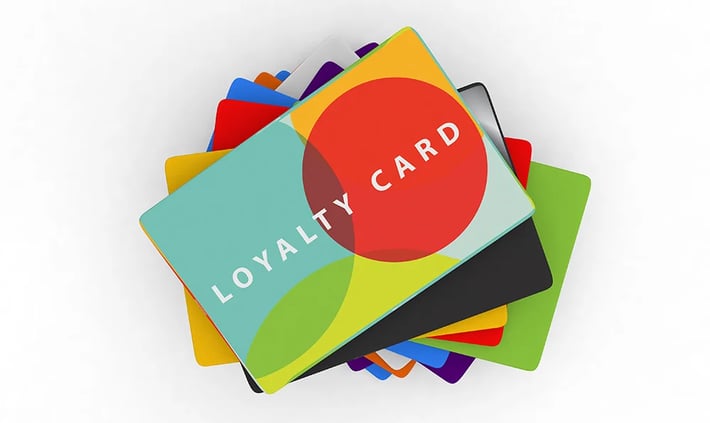
The mechanics of customer loyalty schemes
There are a number of different types of customer loyalty scheme, each tailored to suit the unique needs and preferences of businesses and their customers, which include the following:
But here's where it gets interesting – it's not just about spending money. You can build up your points not only by making purchases, but taking other actions, such as referring friends to join the programme or actively interacting with the brand on social media.
The real magic happens when those points accumulated can be turned into real, valuable rewards. These come in various forms, such as tempting discounts on future purchases or receiving free gifts from the brand.
So, how is it effective? Quite simply, customers are encouraged to shop, engage, and refer friends, knowing that they’ll receive tangible rewards. On the other side, businesses benefit from increased customer engagement, collect valuable data, and increase the chances of customers coming back for more.
Cashback is a strategic marketing initiative employed by businesses to foster customer loyalty and boost sales. This incentive-driven scheme rewards customers by returning a specific percentage of the purchase price in the form of cash or store credit, providing them with financial benefits and the extra incentive to continue supporting a specific business.
Cashback schemes are a financial boon for budget-conscious consumers who are keen to save while spending, as it’ll cut down the cost of their basket. The flexibility is also appealing – they can choose how to use their rewards, whether it's to offset future purchases, accumulate credits for an important buy, or even withdraw cash.
So, what’s in it for businesses?
Quite simply, by offering cashback rewards, businesses can stimulate higher sales volumes. Customers are motivated to spend more or make additional transactions to earn more cashback, which has a direct impact on the bottom line. What’s more, it can also help your business stand out in a highly competitive marketplace.
Ultimately, this type of programme actively engages existing customers, making them feel like valued members of a community and the brand’s success.
Ultimately, referral programmes tap into the trust people have in their friends, family, and colleagues.
When a satisfied customer recommends a product or service to someone they know, it carries a level of authenticity that traditional advertising struggles to achieve.
What’s more, they’re extremely cost-effective. Rather than spending a large chunk of the budget on advertising campaigns to attract new customers, businesses can allocate this task to their existing customers instead. The result? Higher cost savings and hopefully, return custom – so it’s a win-win.
Here, participants are issued physical or digital cards to track their loyalty and earn rewards.
These programmes are commonly used in retail, hospitality, airlines, and more.
Here are some examples:
- Stamp cards (typically for small businesses)
A stamp card (also known as a punch card), is a simple and somewhat traditional method used by businesses to encourage customers to return to their store.
Customers receive a physical card that they get stamped, for each qualifying purchase or transaction they make with the business. Once the customer collects a certain number of stamps or punches on their card, they are rewarded with a free product, discount, or other incentive.
Stamp loyalty cards are commonly used by small businesses such as coffee shops, restaurants, cafes, ice cream parlours, and small retail stores. The good news is that they’re straightforward and cost-effective to implement. - Supermarket loyalty cards
Supermarket loyalty cards represent a widely embraced strategy employed by grocery store chains, aimed at nurturing customer loyalty. These cards are particularly attractive to budget-conscious shoppers who are eager to secure cost-effective deals.
As soon as a customer signs up, businesses gain valuable insights into their shopping habits and preferences. This treasure trove of data empowers supermarkets to craft targeted promotions and exclusive offers tailored to each individual customer's preferences, significantly elevating the likelihood of repeat visits and future purchases.
At the heart of most supermarket loyalty cards lies a fundamental feature: the accumulation of points, which can be exchanged for complementary products or discounts which encourages them to return to the same supermarket. - Restaurant loyalty cards
Restaurant loyalty cards are a savvy marketing strategy that eateries across the UK are using to cultivate a loyal customer base while enhancing the overall dining experience.
At the heart of restaurant loyalty programmes lies the concept of customers earning rewards with each visit. These rewards can take various forms, such as points, stamps, or digital credits. Typically, customers accumulate these rewards based on their spending, the number of visits, or specific items ordered.
However, perhaps one of the key benefits is the prospect of heavy discounts or even free meals.
Customers become eligible for enticing rewards after reaching a predetermined milestone, such as a certain number of visits or a minimum spending threshold. In some cases, restaurants go the extra mile with loyalty members when celebrating a birthday or special occasion by offering complimentary desserts to make the occasion even more memorable.
In most cases, restaurant cards can now be uploaded onto mobile apps, which allows customers to view their rewards status, and receive real-time updates on promotions and offers seamlessly.
Online loyalty schemes are customer retention initiatives that are primarily operated through digital channels, such as websites, mobile apps, and email.
Here are some key features and components:
- Digital enrollment: Customers can sign up through a business's website or mobile app. During the enrollment process, they provide their contact information and may be asked to create an account.
- Virtual rewards: Virtual rewards, such as points, digital credits, or badges, are used to incentivise customer participation. Customers earn these rewards for various actions, including making online purchases, referring friends, writing reviews, or engaging with the brand on social media.
- Credits redemption: Customers can redeem digital credits for rewards directly through the digital platform. Rewards typically include discounts on future purchases, free products, access to exclusive content, or other valuable incentives.
- Personalisation: Online programmes utilise customer data and online behaviour to personalise offers and recommendations. Advanced algorithms analyse past interactions and preferences to suggest products or content tailored to individual tastes.
- Gamification: Some online loyalty programmes incorporate gamification elements to enhance engagement. This might include challenges, leaderboards, badges, and interactive features that make the program more entertaining and engaging.
- Data analysis: Businesses use data collected to gain insights into customer behaviour, preferences, and online interactions. This information informs digital marketing strategies, content creation, and improvements to the overall customer experience.
B2B (business-to-business) loyalty programmes are strategic initiatives designed to foster strong and mutually beneficial relationships between a business and its business customers or partners, unlike B2C (business-to-consumer) loyalty programmes, which target individual consumers,
Here's an overview of key elements and considerations for B2B loyalty programmes:
- Target audience: B2B loyalty programmes primarily target businesses, including suppliers, distributors, wholesalers, resellers, and other corporate entities. The goal is to incentivise these businesses to continue working with the programme provider.
- Relationship-based: These schemes emphasise building and nurturing long-term relationships. These relationships often involve ongoing contractual partnerships, making loyalty crucial for sustained success.
- Rewards and incentives: Just like B2C programmes, B2B loyalty schemes also offer rewards and incentives to participants. These rewards can include discounts on bulk purchases, access to exclusive products or services, co-marketing opportunities, or priority support.
- Value-added services: Many B2B loyalty platforms provide value-added services, such as training, technical support, or market insights, to help partners improve their business operations.
- Multi-tiered structures: They often incorporate multi-tiered membership structures, where partners can progress to higher tiers based on factors like transaction volume, engagement, or long-term commitment. Higher tiers come with greater rewards and privileges.
- Collaboration opportunities: Some programmes may offer collaborative opportunities, such as joint marketing campaigns, co-development of products or services, or participation in industry events.
Tiered-based loyalty programmes are a structured approach to incentivising repeat business, which has become successful in a number of industries. These programmes reward customers based on their level of engagement and spending, aiming to motivate them to ascend through different tiers or levels. As they progress, they unlock progressively valuable rewards and benefits.
Let's delve deeper into how tiered loyalty programs operate:
- Tiers or levels: They typically consist of multiple tiers or levels, each representing a different level of engagement or spending. Common tiers follow a Silver, Gold, Platinum, format (albeit often renamed).
- Tier qualification: To enter or move up to a higher tier, customers must meet specific criteria set by the business. This criteria can include factors such as the total amount spent or the frequency of purchases etc.
- Increasing rewards: As customers progress through the tiers, they are rewarded with increasingly valuable benefits and incentives, such as discounts, free products or services, early access to promotions and exclusive events.
- Tier maintenance: Some programmes require customers to maintain their spending or engagement levels to retain their tier status. If they do not meet the criteria, they may be demoted to a lower tier.
Trade loyalty programmes are initiatives designed to build and strengthen relationships between a company and its distribution partners, resellers, wholesalers, and other business-to-business (B2B) entities within the supply chain. These may include builders or bathroom showroom companies.
Here are some key components of trade loyalty programmes:
- Rewards for sales and performance: Partners earn rewards based on their sales performance, achieved targets, or other key performance indicators (KPIs) specified. These may include discounts, rebates, cash incentives, co-marketing funds, or free merchandise.
- Co-marketing support: Businesses frequently extend co-marketing assistance to their trade partners, encompassing resources like marketing materials, training and access to marketing funds. These provisions prove advantageous for both parties as they empower trade partners to more effectively promote the company's products or services.
- Access to exclusive products or services: High-performing trade partners may gain access to exclusive products, services, or early product releases, giving them a competitive edge in the market.
- Data sharing: To strengthen collaboration, companies may share market data, insights, and customer information with their trade partners, helping them make informed business decisions.
The different types of customer loyalty
Not all loyalty is the same. In fact, some loyalty isn’t even loyalty! (Wait… what?).
Let’s just take a look at loyalty you have for brands that you probably interact with on a day-to-day basis... You shop at your favourite supermarket most likely because it’s convenient, and prices are relatively competitive. Maybe it’s around the corner, and even if they’re more expensive than other places, it’s probably only a few pence so not worth quibbling over. The problem is, if you move house, or if the prices rise enough that you think it’s maybe worth an extra 5 minutes in the car, you’re off somewhere else! The supermarket thinks you’re loyal because you’re back there every week, whereas in reality you’re ready to go at a moment’s notice.
On the other hand, let’s imagine your favourite coffee shop, maybe one where you’re friendly with the barista who makes your flat white just the way you like it. Not only will you go an extra 30 minutes out of your way just to get a coffee on the way to work, but you’ll rave about them to your friends. “You should come and see Jo at Bean-2-cup, honestly she makes the best flat white, I won’t go anywhere else!”. This is loyalty most brands only dream of.
Maritz's loyalty quadrant (which we're lovingly re-creating with our colours!) organises different loyalty into four types - true, cult, inertia and mercenary. These are then split on two axes by whether the loyalty you’ve built is relational or transactional (are you focused on price, or offering an exceptional and emotional relationship?), and whether the customers are passive or active in their interactions with your brand and with their loyalty.
1. Inertia loyalty – “I’m here because it’s too much trouble to go elsewhere.”
This type of loyalty almost isn’t loyalty at all. Sure, the customers keep coming back for more, but that's only because there is a barrier to exit, not because they love your brand and have an emotional connection. It could be that they're not aware of an alternative product or service, so buy from you for ease, or it could be that the price is within their budget. It’s unlikely that these customers will recommend you to other people. The risky thing about this type of loyalty is that there's a high chance of them being influenced by your competitors. All your competitors would need to do is run a decent promotion to convince this customer it’s worth an extra 5 minutes out of their day to switch and BAM - they've nabbed them from you! So how can you encourage true or cult loyalty with this group? A lot of the activities will need to focus around education and reward. Educating them not only about your products and the value of them, but also about your business values and beliefs in the hope that they relate with them. As they start to learn more and are rewarded for their time and loyalty, their opinions may change.
2. Mercenary loyalty – “I’m loyal because you pay me to be loyal.”
Like inertia loyalty, this type isn't exactly ideal for your business. To put it bluntly, they are loyal because of some sort of bribe. These people love shopping around for the best deals, discounts and rewards, therefore are easily influenced by your competitors. If you are continually trying to attract these customers from your competitors, you’ll get trapped in a race to the bottom. You need to be very cautious of this type of loyalty as they're only attracted to your offers, and not your products, services, beliefs or values. You can alter their mindset from being "money driven" to "value driven" by educating them on the value of your products so they can see what they're getting for their money, rather than promoting the discounts on offer.
3. True loyalty – “I’m here because I’m emotionally connected.”
First up, we have true loyalty. This type of loyalty means customers have an emotional connection with your business, like believing you share some of their values. They are very happy with the products or service you offer and are unlikely to be influenced by your competitors. Although they respect and admire your business, they aren’t quite ready to be recommending you to everyone they meet! These customers are already very happy with what you offer, but you should still continue to reward their loyalty and reinforce that behaviour. You should try and introduce ‘wow moments’ and extra special VIP service for special customers, and maybe start to encourage them to tell their friends by rewarding referrals.
4. Cult loyalty – “I’m in for life. The brand reflects my values and identity.”
The customers that show "cult loyalty" are your brand evangelists, and your brand forms part of their identity! Like true loyalty, as discussed in the point above, they have an emotional connection with your business and share your values and beliefs, but more importantly, they think your brand represents their values and beliefs to others. These customers are very unlikely to shop elsewhere and be disloyal. These customers are almost an extension to your sales team, and LOVE to rave and shout about your products, service and their experience to their friends and family. They know you won’t let them down, and might make them look good to their friends toboot! Be careful though, if you drop your service levels and make bad on a recommendation they’ve made of you, there might not be any coming back…
5 Customer Loyalty Programme Myths
Have you fallen prey to some of the most common customer loyalty myths out there? Take a look at what’s been travelling through the grapevine lately, and exactly why it’s a mistake to take them as truth.
1. Myth: It’s too time consuming
Fact: The right loyalty programme doesn’t need to represent a big, ugly drain on your time. It’s more than possible to maintain a successful scheme without sacrificing all your time to it.
Devising a customer reward programme from scratch can be very time-consuming, but there’s no reason why already-busy companies should have to devote their own time and energy to building something worthwhile brick by brick.
This is our particular area of expertise at Incentivesmart – building loyalty programmes that integrate easily and seamlessly with your existing processes. For instance, our work with Fluid saw us integrate our rewards platform with their existing CRM system, meaning the additional ‘work’ of running the scheme was automated, and the business didn’t need to disrupt flow just to make it operable.
2. Myth: Vouchers work just as well
Fact: Vouchers aren’t totally useless, and they can be appreciated, but they’re not memorable, they feel restrictive, and they’re definitely not fun.
Vouchers are there to be redeemed against a subsequent transaction, and businesses like them because they encourage customers to return for that subsequent transaction. This is good for encouraging a little extra return business, but is that comparable to long-term loyalty from customers who are really motivated to give you as much business as possible? How compelling can a voucher get?
A varied and exciting rewards catalogue is something that’s worth working towards. You just can’t generate that same level of excitement with vouchers unless those vouchers are worth considerable cash – and where’s the benefit for you in that?
Some businesses will offer vouchers that work at more than one business. Love2Shop is a good example of this. There are some benefits there since they’re more compelling and memorable than a voucher for, say, 10% off from the business that issued it, but it also limits the amount of data you can gather on your customers – and data is one of the major benefits of running a loyalty programme.
Download your FREE guide to improving customer retention

3. Myth: The Reward Doesn’t Matter as Long as We’re Doing Something
Fact: Wrong, wrong, wrong. Your rewards catalogue can make or break your incentive programme.
Ah, the old ‘it’s the thought that matters’ chestnut. This is very true in plenty of scenarios – Christmas gifts from your great-great grandmother or a teacup of tepid tap water ‘tea’ served up by a toddler, for instance. But, when it comes to rewards extended to customers who could transform your retention and churn rates, it would be a big mistake to assume they’ll sip happily away, rub their bellies, and say, ‘Yum!’
Now more than ever before, customers are very switched on to the strategies companies use to win their business. This is as true in B2B as it is in B2C, and it’s very important that modern businesses design everything – from marketing to rewarding – around the understanding that customers are cynical, and they know when they’re being undervalued.
Offering the right rewards – whether you’re looking for channel partner incentives or opportunities to reward your own employees – is imperative. It means the difference between causing the release of those happy chemicals and leaving customers feeling cold and disinterested (at best) or irked and repelled (at worst).
The time when we could be generic and bland has long-since passed. So many businesses – the overwhelming majority, in fact – offer loyalty schemes, but customers will only buy into a handful. Stand out on the strength of your rewards catalogue. If they don’t see things that interest them, why bother collecting the points?

4. Myth: Loyalty only lasts until the next competitor runs a deal
Fact: Most customers are looking to align with brands that showcase their values, particularly when it comes to customer-centrism. Loyalty is worth more than a rival sale or promotion – that’s what makes it so valuable.
The types of customers who are willing to jump from one brand to the next depending on what deals are running at that moment aren’t the kind of customers you should be working to acquire. These customers will ‘love you as they leave you’ in the sense that they will be drawn in by your promotion, and drawn away by a rival promotion.
We refer to these types of customers as ‘mercenaries’, and there’s very little benefit in targeting them. They drive-up first-time business, but they also drive-up your churn rate.
By focusing on long-term loyalty, you begin to take on more of the ideal type of customer: the evangelist. These customers aren’t just bringing return business, but genuine engagement that gets you more word-of-mouth recommendations, and a higher ROI over the long haul.
5. Myth: It’s better to just shrink margins and improve customer service.
Fact: This is risky. Where does it end? While improving customer service is always a good thing, you can’t make endless improvements, just as you can’t endlessly shrink margins.
This is a common trap for businesses to fall into – the idea that they just need to be more competitive to keep winning over business. There’s a certain amount of truth in it – after all, most of us are suckers for a great deal – but this can’t be a ‘one and done’ strategy. Eventually, those shrunken margins will be rivalled by another business, and you’ll need to shrink them thinner still to keep competing at the same level. That’s why they call razor-thin margins business kryptonite.
Improving customer service and making better use of those B2B communication opportunities will always serve the business, but don’t consider that an alternative to strategising customer loyalty.
Take yourself out of this vicious cycle as soon as you can. You and your customers will be better for it.
Ready to kickstart your own customer loyalty scheme?
Launching a loyalty scheme for your business should be at the top of your priority list to keep your customers returning time and time again. While building a devoted customer base might not happen overnight, there are a few key crucial aspects to keep in mind: make it easy to use, actively share its advantages with your customers, and closely keep an eye on how it performs.
As you embark on this new business journey, remember that nurturing these valuable customer relationships is a gradual process that requires time and patience, but the lasting impact will make every step worthwhile.
Discover our customer loyalty platform in just 3-mins
Watch a quick demo video right now.
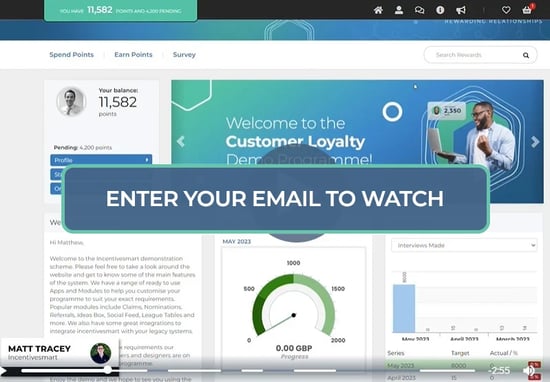


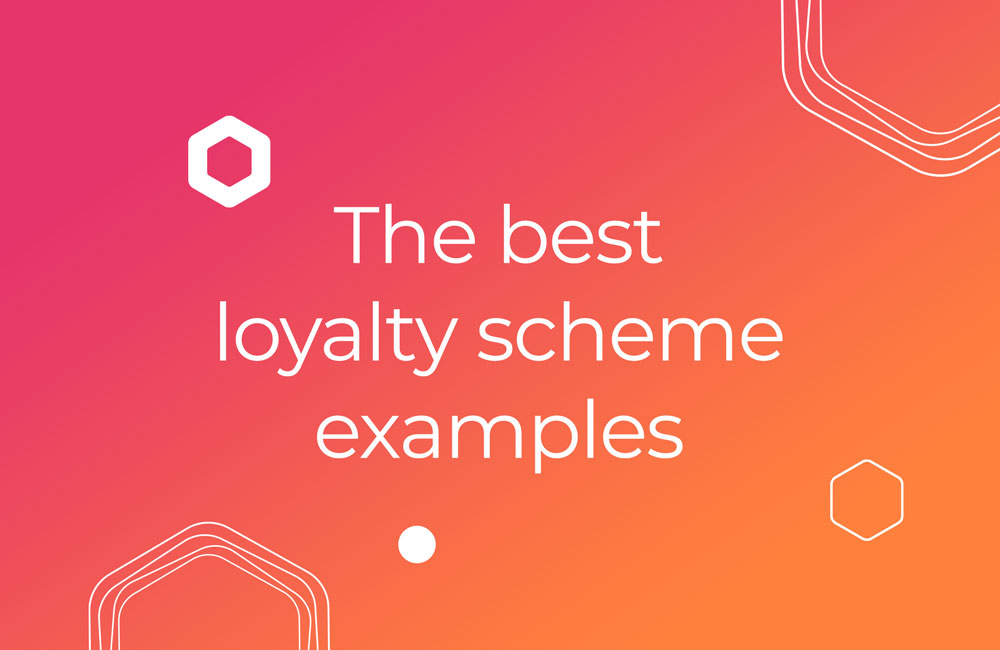
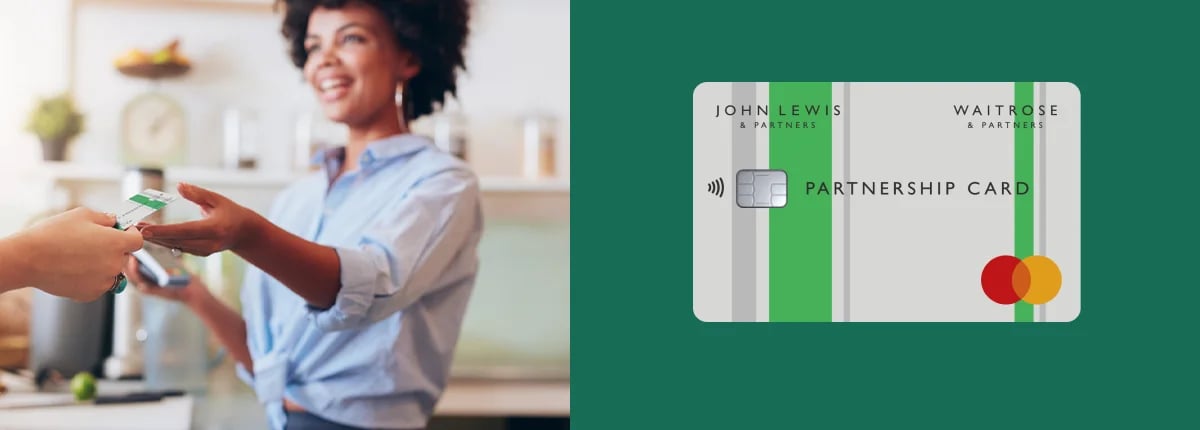
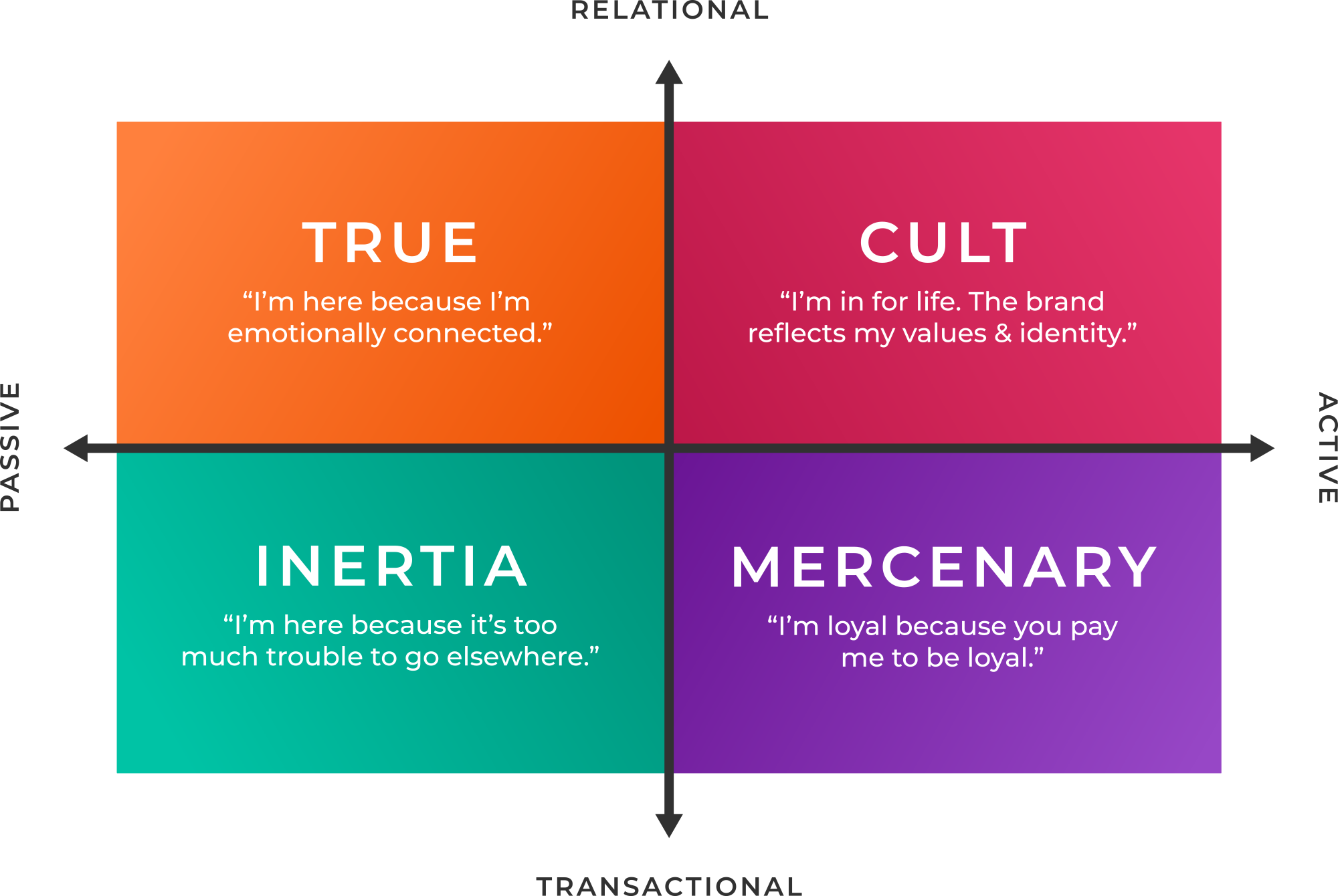






Join the discussion